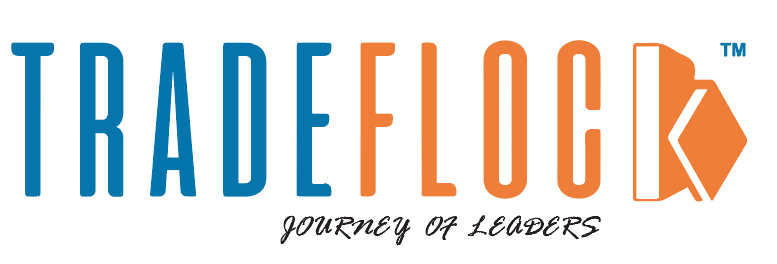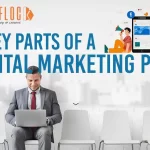If you think marketing is a quick process and shows instant results, think again! Marketers use multiple marketing funnels to achieve the target results. The marketing life cycle, often termed lifecycle marketing, is the set of processes followed to acquire customers and lead any marketing campaign. To expand the customer’s LTV (lifetime value), this lifecycle is drawn to lead the customer’s journey toward brand awareness and finally lead to conversion.
Among leading marketers, the marketing lifecycle is a fascinating concept; if you want to delve into more confined details, here is the detailed blog to follow.
Table of Contents
What’s Marketing Life Cycle?
The marketing lifecycle comprises marketers’ marketing techniques to target customer experiences while interacting with the designed marketing funnel. The concept harnesses the power of customer acquisition by thoroughly comprehending their psychology, motivations, and concerns and offering effective solutions as products or services. Then, brands and marketers use insights from these cycles to create strategies to influence purchasing decisions.
The cycle length and stages depend on the business size and how it is established in the market. For instance, giant companies like Mercedes and Nestle follow competition-based marketing goals to pool their customer retention game. Meanwhile, other new players in the business world might use a comprehensive marketing cycle to introduce the brand to final conversion.
6 Stages of Marketing Life Cycle
You might find multiple theories and interpretations of lifecycle marketing; however, there are formulated stages to nurture existing and convert potential new customers. Understanding each stage will help you elevate your marketing strategy and gain targeted conversions. Here are the stages of the marketing lifecycle:
1- Awareness
Customers are introduced to brands and their products and services in this initial stage of the marketing life cycle. As it is positioned at the top of the funnel, marketers try to grab potential customers’ attention and divert their attention toward products or services.
Example: Brands might use video ads to catch customers’ attention and help them understand their product or service offerings.
2- Engagement
The second stage of the marketing life cycle is engagement. As brands already grab customers’ attention, if they find them appealing, customers will proceed with actions like visiting profiles and websites or scrolling through social media. It can be said that this stage connects customers with brands.
Example: If you are using video ads, customers can click on the link provided and visit your e-commerce store to explore products.
3- Evaluation
At this stage of the marketing life cycle, customers will move ahead with decision-making. Here, brands try their best to influence customers to buy products or services. Marketers here try to showcase their offerings using content or attractive demonstrations based on studied buying behaviour.
Example: As the customer has already reached your website or online store, they will explore the offering and decide whether to buy it. Brands use discounts and lucrative offers to attract customers.
4- Purchase
Every marketer or brand loves this stage, as their customer finally purchases products or services. This stage of the marketing life cycle is considered the funnel’s success as it accomplishes the target of customers making purchases. However, it is not the end here; the funnel has further stages.
Example: This stage can be understood as when a customer hits the buy button and successfully places their order online.
5- Support
As the customer finally made the purchase, marketers now focus on setting the target for repurchase. To nurture customers, brands use the best customer support services to handle their grievances and queries. It builds more transparency and trust among customers, leading to long-term relationships.
Example: Imagine your customer likes the product but is uncomfortable with the size or colour. They will contact support for an exchange or replacement. Brands can make a good impression here by offering the best support services.
6- Loyalty
Marketers find this marketing life cycle stages the jackpot phase, where customers keep returning to repurchase and refer products or services to others. It helps brands gain loyal customers and build relationships with existing customers.
Example: Brands use regular follow-up and wish customers special events to gain their attention even after purchasing. The purpose is to keep customers engaged so they do not forget about the brand and continue recommending its offerings to others.
So, these are the steps of the marketing life cycle. It might look simple, but brands struggle a lot to find the correct marketing funnel that scales their reach and revenue.
Purpose of Marketing Life Cycle
As we have the context of the marketing life cycle, it is essential to understand why brands use this strategy and their aim behind using this lifecycle marketing.
- They want to build long-term relationships with customers to expand their sales.
- To offer customers the ease of repeat purchases.
- Leveraging marketing ROI (Return on Investment) or Customer Lifetime Value.
- Converting loyal buyers into brand advocates.
- To grow the existing customer base and improve the buying experience.
- Improving loopholes in marketing strategy and analysing buying patterns.
- Real-time data insights to attract more new buyers.
More Growth – More Revenue!
If brands achieve the highest benchmark at every stage of the marketing life cycle, they can expect tremendous brand recognition and revenue growth. Many good examples prevail in the market, such as Coke, Nestle, boAt, Lenskart, Zomato, Swiggy, and others who are actively gearing up their marketing game.
Follow Tradeflock for more new marketing concepts!
FAQs
What are the stages of the customer life cycle?
There are five stages: Reach, Acquisition, Conversion, Retention, and Loyalty.
What are the 4 C’s under Customer Relationship Management?
The four C’s under the CRM are Customer Experience, Conversation, Collaboration, and Content.
What is the market process cycle?
It comprises three stages: attract, Nurture, and Convert. It is a cycle designed to acquire customers and convince them to buy the product and services.
Why is the marketing life cycle important?
Through an effective marketing life cycle, marketers can easily study the market, buying patterns, strategies, and other potential buyers. It also elevates customer retention and leads to repurchasing.






